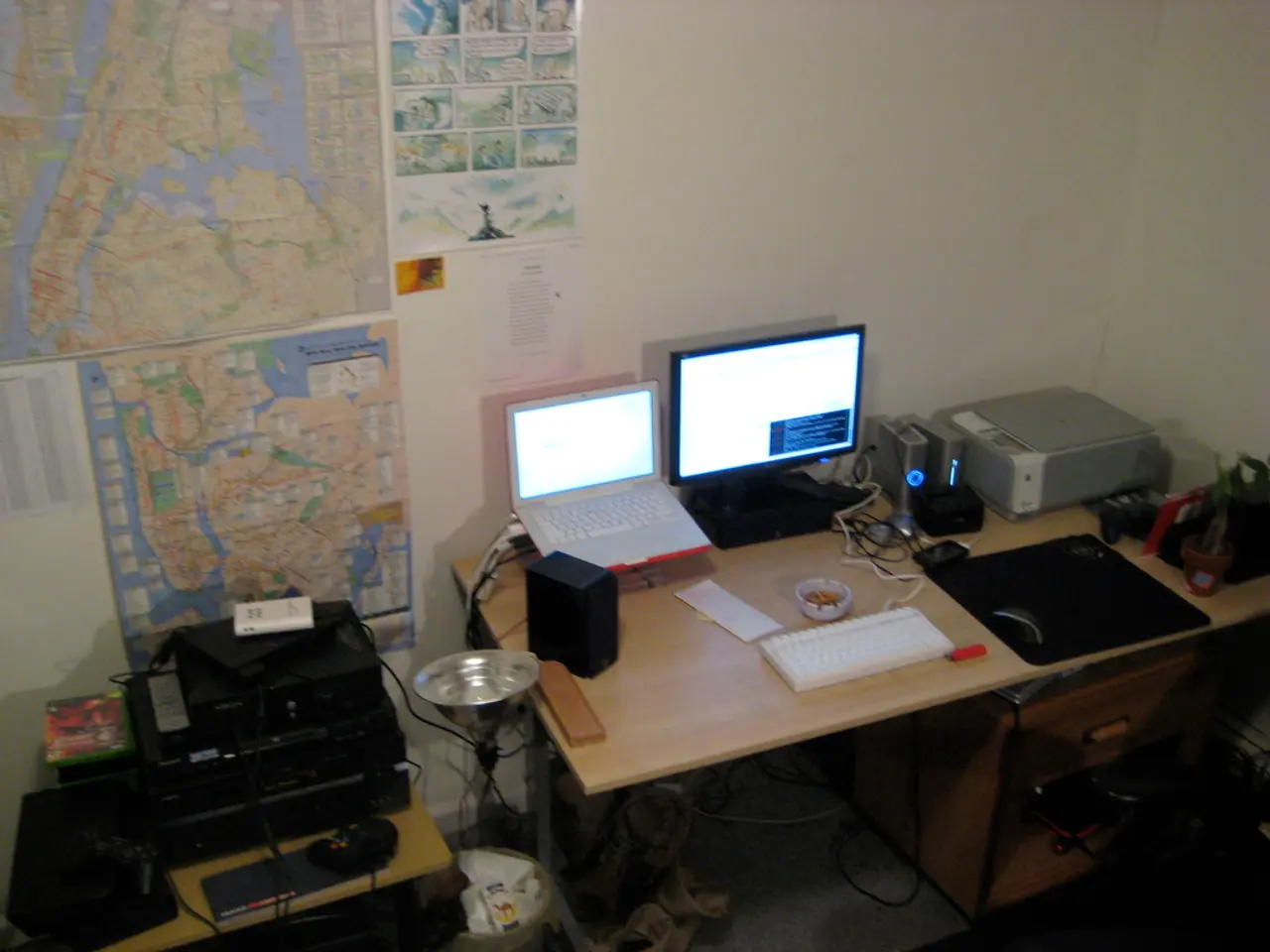Transforming Realms: The Ascension of Spatial Computing in Commercial Sectors
In the ever-evolving landscape of technology, a new player is making waves - spatial computing. This innovative technology is revolutionizing real-time data analysis, decision-making, and user engagement across various sectors by seamlessly integrating digital and physical environments.
Spatial computing leverages cutting-edge technologies like Augmented Reality (AR), Virtual Reality (VR), Artificial Intelligence (AI), and the Internet of Things (IoT) to deliver precise tracking, contextual awareness, and natural user-machine interaction within shared spaces.
In the realm of retail and e-commerce, spatial computing is transforming customer experiences. Virtual try-on solutions and interactive store layouts are making shopping more engaging and personalized. Customers can visualize products in their physical spaces before purchase, reducing returns and enhancing satisfaction.
The manufacturing and enterprise sector is also benefiting from spatial computing. Digital twins of factories allow for monitoring production lines and simulating operational scenarios. This leads to faster design iteration, reduced downtime, and accelerated cross-team collaboration. Ford, for instance, uses VR for global collaborative car design.
Healthcare is another industry where spatial computing is making a significant impact. Real-time patient monitoring and the integration of multiple data sources visually are improving clinical decision-making, leading to better outcomes. In healthcare, mixed reality overlays during procedures are improving precision and outcomes.
Spatial computing is also transforming social and collaborative workspaces. Remote teams can interact as avatars in shared 3D environments, improving communication and collaboration over traditional video calls. This creates a sense of shared physical presence, fostering a more engaging and productive work environment.
Amid commoditized markets, spatial computing offers a means to deliver differentiated experiences. By bridging digital intelligence with physical reality, it offers a powerful toolkit for navigating technological disruption.
However, the adoption of spatial computing comes with challenges. Ensuring privacy and ethics compliance is crucial, as spatial data can be sensitive. Training the workforce with the skills to work with spatial tools is another important consideration. Thorough planning, including assessing technology readiness, is essential for a successful implementation.
As spatial computing matures, it's becoming a cornerstone of enterprise innovation across industries. Companies that act now on spatial computing can set the pace for a more immersive, efficient, and resilient future. Whether it's in real estate, where prospective buyers can tour properties remotely using immersive 3D walkthroughs, or in the entertainment industry, where location-based AR experiences are redefining gaming and live events, spatial computing is poised to reshape our world.
Adopting spatial computing offers a pathway for businesses to enhance productivity without expanding headcount. AR-powered maintenance tools in manufacturing, for example, reduce downtime by guiding technicians with real-time instructions. In logistics, smart glasses and spatial tracking systems help optimize picking and packing processes.
In conclusion, spatial computing, when fully implemented, positions organizations as resilient, forward-looking leaders. By embracing this technology, businesses can navigate the challenges of a rapidly changing world, delivering innovative, immersive, and efficient experiences to their customers.
- Spatial computing, with its capabilities in Augmented Reality (AR), Virtual Reality (VR), Artificial Intelligence (AI), and the Internet of Things (IoT), is revolutionizing data analysis, decision-making, and user engagement across various sectors, offering a powerful toolkit for navigating technological disruption in business, finance, and beyond.
- In the industry of retail and e-commerce, spatial computing is enhancing customer experiences by providing virtual try-on solutions and interactive store layouts, enabling users to visualize products in their physical spaces before purchase and thus reducing returns and boosting satisfaction.
- Adoption of spatial computing by manufacturing and enterprise sectors is yielding benefits in the form of digital twins of factories for monitoring production lines, simulating operational scenarios, and accelerating cross-team collaboration, with companies like Ford already using VR for global collaborative car design.
- Amid challenges in ensuring privacy and ethical compliance, training the workforce, and assessing technology readiness, spatial computing is poised to reshape healthcare, real estate, entertainment, and logistics industries by delivering differentiated experiences, improving productivity without expanding headcount, and positioning forward-thinking organizations as resilient leaders in an ever-changing technological landscape.




